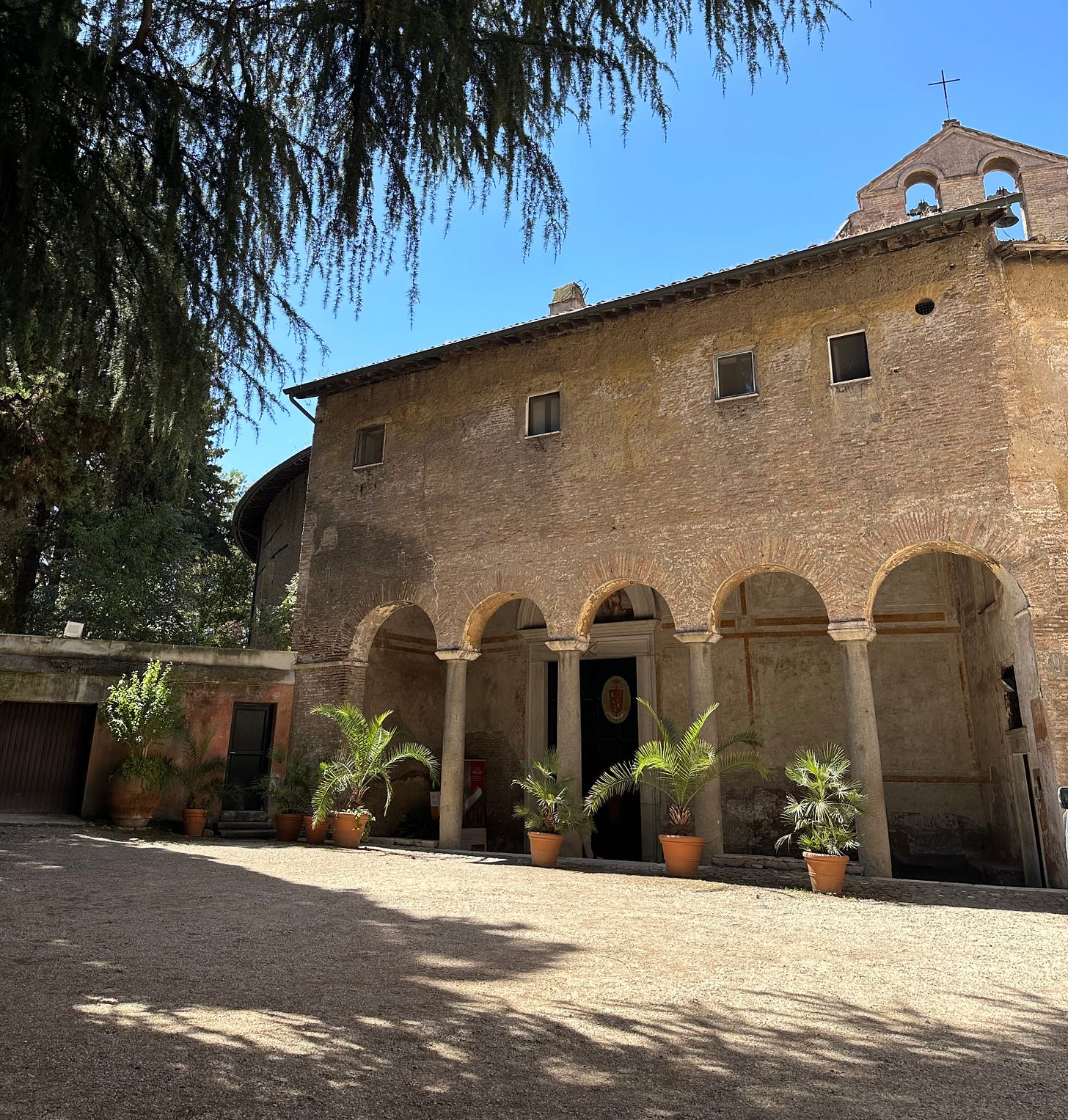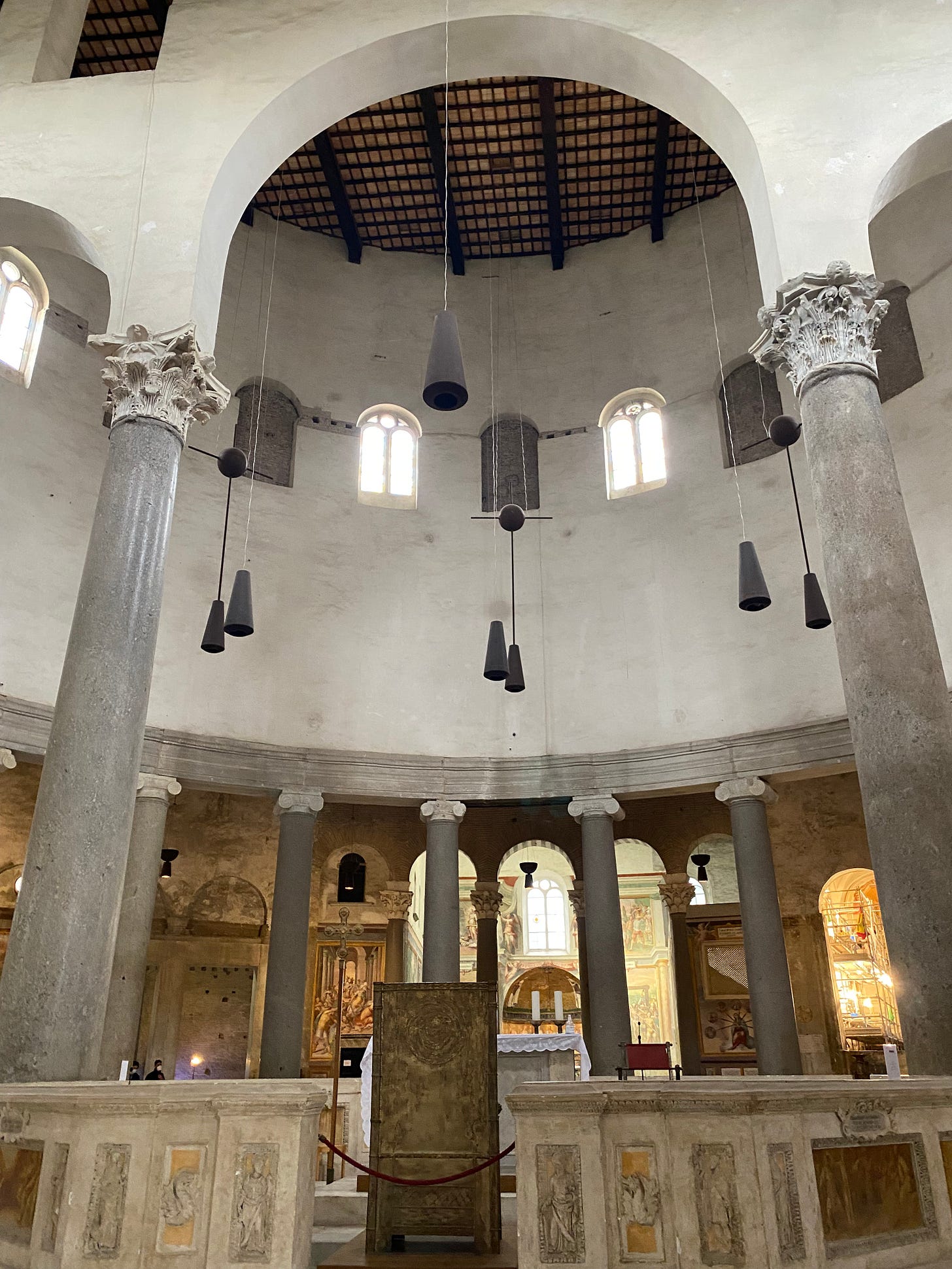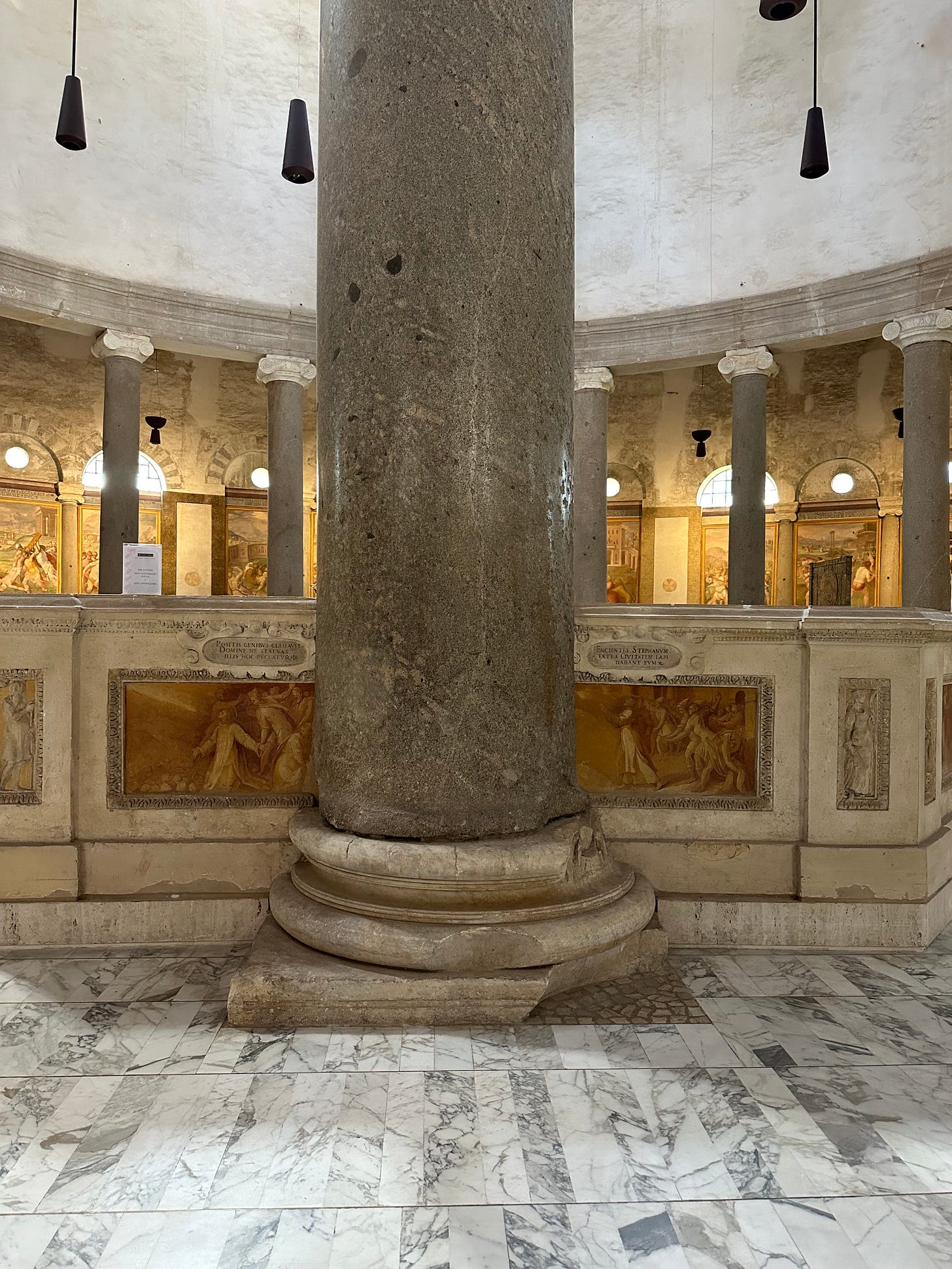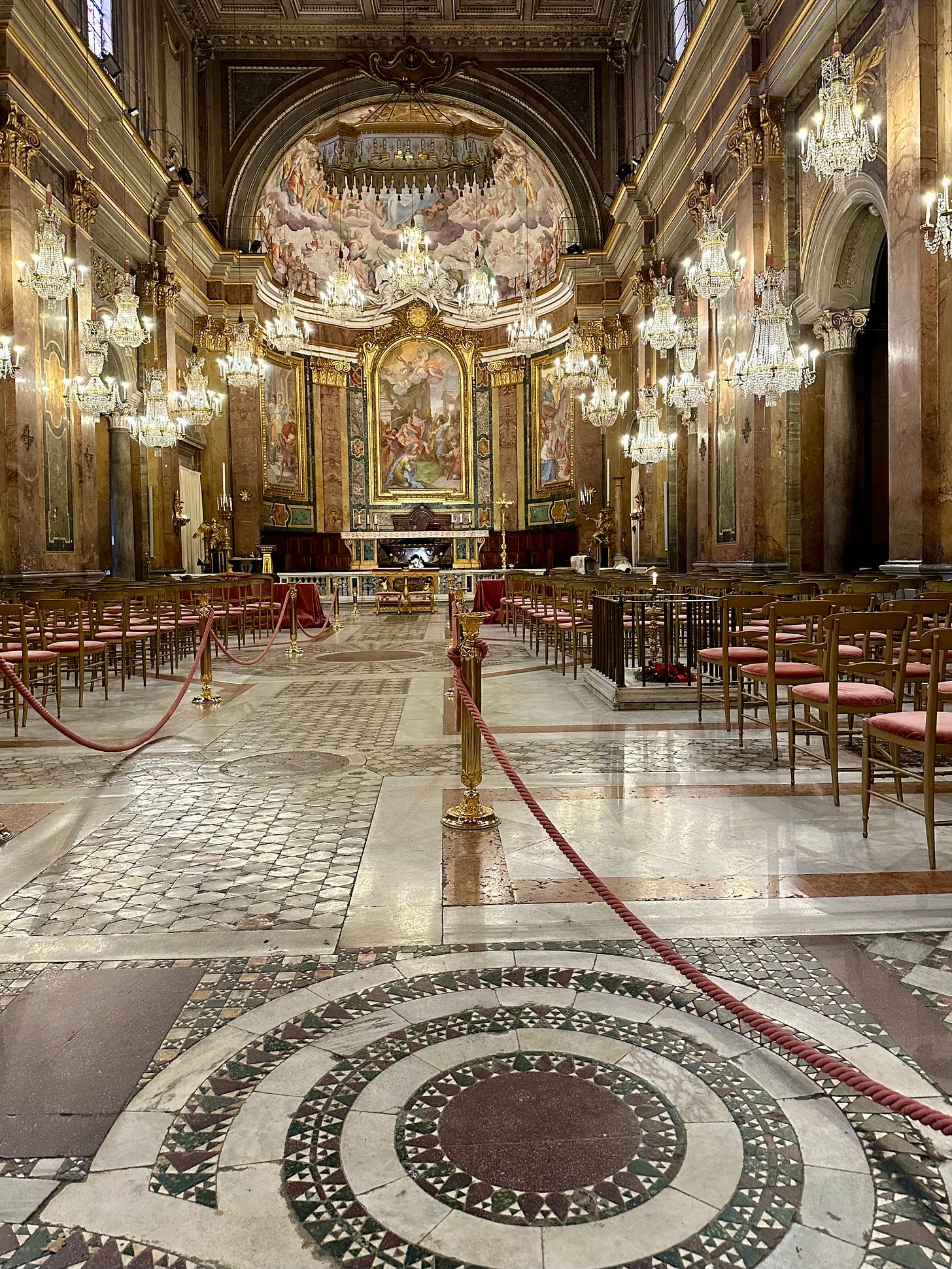Yesterday after two hideously muggy, grimly overcast days—the sky heavy and enervating—the heat finally dropped below blood temperature and blue skies returned. It was a beautiful day for a wander over the Caelian Hill and my morning tour visited the gloriously timeless and relentlessly evocative church of Santo Stefano Rotondo. Just a stone’s throw from the melee in the valley of the Colosseum below, exacerbated by the simply interminable Metro works, much of the Celio appears as it must have done to a medieval pilgrim. Its proximity to the prosaic somehow renders its otherness even more “other”. I love it more than I can say.
The church of Saint Stephen dates to the second half of the fifth century and is a splendid example of early Christian architecture. Built during the death throes of the Roman Empire, perhaps during the reign of Pope Simplicius (468-483), the centrally-planned structure recalls both Roman mausolea (Cecilia Metella, Augustus, Hadrian, Constantina), and the martyria of the Constantinian era (the church of the Holy Sepulchre at Jerusalem, the long lost Church of the Holy Apostles at Constantinople).
It heralds the birth of a papal building programme, under the direct control of the Bishop of Rome and no longer entirely reliant on the financing and building of churches by wealthy congregations (a matter of decades earlier the nearby, and vast, Basilica of Sts John and Paul, of which more anon, had been sponsored by the senator Pammachius).
The crumbling of Imperial Rome, which no more fell in a day than it was built in one, was characterised in architectural terms by a sort of auto-cannibalism: the city of the popes began devouring the city of the emperors. My tutor at university, Dr James Lawson, memorably described it as “scavenger architecture”. The columns at Santo Stefano Rotondo are fine examples of this scavenging.
In the central circular space, two vast columns date to a twelfth century restoration of the church: by then ravaged by time, earthquakes, and Robert Guiscard. They support three trasversal arches constructed for Innocent II (1130-43) to support a new roof. Made of Egyptian granite, they are bewilderingly vast. I find them quite, dizzyingly, overwhelming. It’s something about the journey they once made from the quarries of Aswan (how many squashed people?), down the Nile (past crocodiles and hippopotamuses!), and across the Mediterranean (without sinking!).
These columns once stood in a grand court of law (or palace, or temple) where they advertised the realisation of the “empire without end” promised by the Jupiter of Virgil’s imaginings. They survived invasions and earthquakes, before eventually being moved here (how many more squashed people?) and subsequently the elegant choir enclosure was, with due deference, built around them.
We then continued our tour to the even more ancient basilica of Saints John and Paul, and admired more granite columns, a splendid floor, and I found a fistful of coins to turn on the chandeliers which once graced the ballroom of the Waldorf Astoria in Manhattan and now hang in the late fourth century basilica: which is really very amusing indeed.








I was today years old, as the kids say, when I learned that there are cast-off chandeliers from the Waldorf-Astoria in an ancient basilica in Rome. Unexpected and so great! Thanks as always, Agnes.
Hi Agnes, yes we too love that walk up the Clivio di Scauro!
Have you planned any Zoom talks anytime soon?